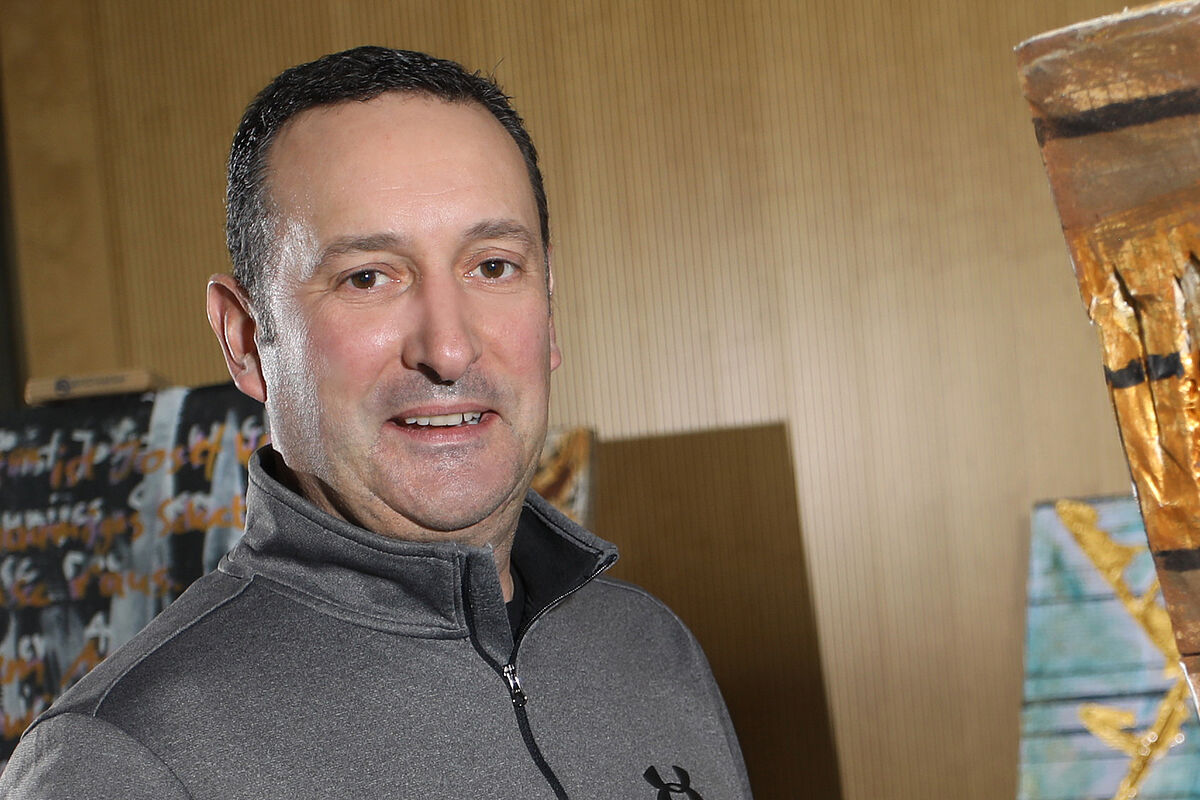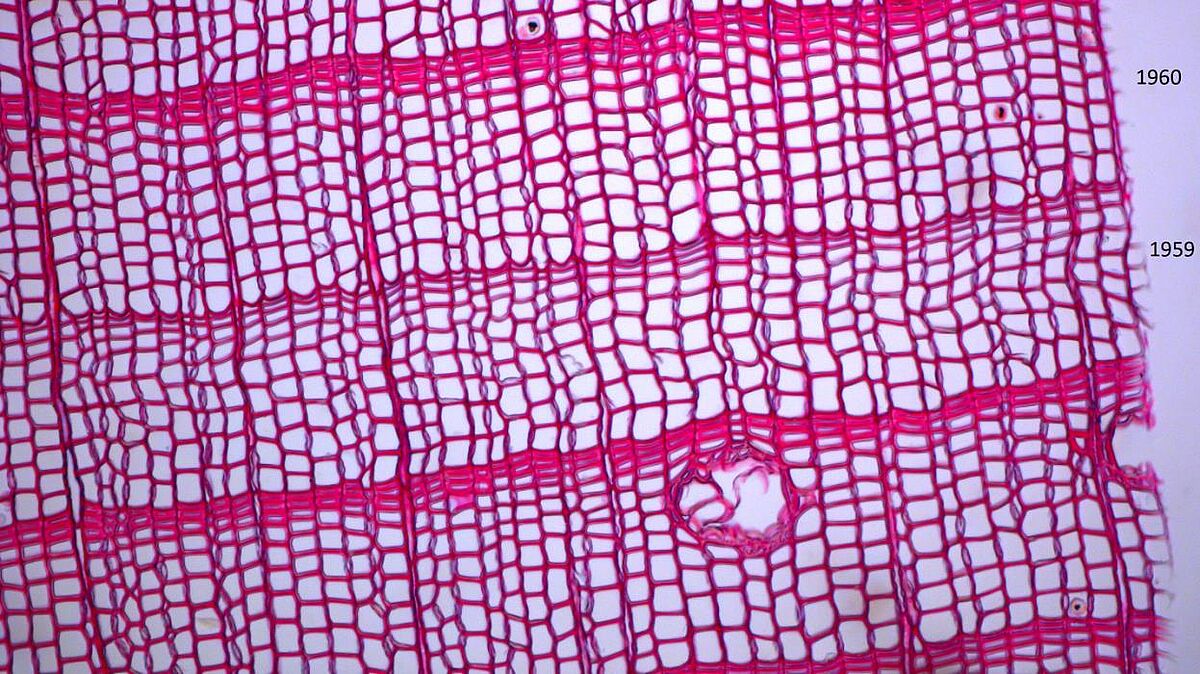
Professor Michael F. J. Pisaric, Ph.D.
Alfried Krupp Senior Fellow
(Oktober 2022 - September 2023)
PhD, Queen’s University
Professor am Institut für Geographie und Tourismusstudien an der Brock University, Kanada
Fellow-Projekt: „Old trees meet 21st technology – Tracking climate and environmental change in Subarctic Canada using emerging technologies in tree-ring research“
Anthropogenic activities are altering the Earth’s atmosphere; increasing the atmospheric concentration of CO2 from ~280 ppm prior to the Industrial activities to ~410 ppm at the current time. Increasing concentrations of CO2 and other greenhouse gases, warm the Earth's atmosphere and alter the functioning of various ecosystem processes. Nowhere is this more evident than in northern regions of the world, where recent increases in temperature are occurring at rates that are double the global mean surface temperature. My research on environmental and climate change in the subarctic is being carried out in association with my colleague, Professor Dr. Martin Wilmking in the Institut für Botanik und Landschaftsökologie at Universität Greifswald. My research will focus on the use of emerging technologies in the field of dendrochronology to study environmental and climate change in the subarctic during the past several centuries. Dendrochronology is the scientific discipline that assigns annual calendar dates to growth increments formed in trees and other woody vegetation. Dendrochronology uses information preserved in these annual growth increments (i.e., the width of tree rings) to provide insights into key processes operating in the atmosphere, biosphere, and lithosphere and how these alter or affect plant growth. I will address the following three research projects during the tenure of my Alfried Krupp Senior Fellowship:
- Quantitative wood anatomy and artificial intelligence and deep learning technologies.
- Blue intensity and disentangling temperature and precipitation controls of jack pine (Pinus banksiana) growth in Yellowknife, Canada.
- Tracking arsenic contamination in the Yellowknife region using ITRAX Multiscanner XRF multi-element analysis.
Results of the fellowship

1. Introduction:
Anthropogenic activities have significantly altered the Earth's atmosphere, leading to a substantial increase in the concentration of carbon dioxide (CO2) and other greenhouse gases. These changes have led to increasing global temperatures and have particularly pronounced effects in northern regions, where temperature increases exceed the global average. This report outlines ongoing research efforts aimed at understanding environmental and climate change in the subarctic, focusing on dendrochronology, the science of dating annual tree growth increments.
This academic report presents an overview of ongoing research activities undertaken in collaboration with Professor Dr. Martin Wilmking at the Institut für Botanik und Landschaftsökologie, Universität Greifswald during my tenure as a senior research fellow at the Alfried Krupp Wissenschaftkolleg. The research focuses on utilizing dendrochronology, with a particular emphasis on emerging technologies, to investigate environmental and climate change in the subarctic region of northwest Canada. Three distinct research projects were proposed and undertaken during my stay in Greifswald: 1) Quantitative wood anatomy and artificial intelligence, 2) Blue intensity as a tool for reconstructing temperature and precipitation records from jack pine (Pinus banksiana) tree-ring chronologies in Yellowknife, Canada, and 3) Tracking arsenic contamination in the Yellowknife region using ITRAX Multiscanner XRF multi-element analysis. The report provides insights into the progress, challenges, and implications of each project, along with additional academic and outreach activities conducted during the research tenure.
2. Research Projects:
The research is organized into three primary projects:
2.1 Quantitative Wood Anatomy and Artificial Intelligence:
This project aims to utilize quantitative wood anatomy, coupled with artificial intelligence and deep learning technologies, to investigate climate change. By analyzing thin sections and images of tree samples, the research team seeks to gain a deeper understanding of environmental processes affecting plant growth. Collaboration with researchers at Lamont Doherty Earth Observatory in the United States has expanded the scope of this project. During my time in Greifswald, I worked collaboratively with one of Dr. Wilmking’s graduate students to co-author a manuscript on machine learning techniques and their application in dendrochronology. The manuscript is in the final stages of preparation to be submitted to the Journal of Ecology. The working reference of the manuscript is: Trouillier, M. et al. Machine learning models predict changing growth rates and a shifting climate sensitivity of white spruce. To be submitted to the Journal of Ecology.
2.2 Blue Intensity and Temperature-Precipitation Reconstructions:
The second project employs the concept of blue intensity to reconstruct temperature and precipitation records using jack pine (Pinus banksiana) tree-ring chronologies in Yellowknife, Canada. Due to the analytical demands of other projects, this research has faced some delays, but it holds promise for enhancing our understanding of subarctic climate variations. My plan is to continue this research during the coming year, with the hope of completing a co-authored manuscript with Dr. Wilmking in the next 12 months. I am hoping to recruit a graduate student to complete some additional analyses to incorporate into the manuscript. This research is ongoing.
2.3 Tracking Arsenic Contamination Using ITRAX Multiscanner XRF Analysis:
This project focuses on tracking arsenic contamination in the Yellowknife region, employing ITRAX Multiscanner XRF multi-element analysis. While the analysis of ten trees has been completed, challenges related to the slow growth of these jack pine trees and machine operability have hindered progress. We hope to final results by late 2023 and a manuscript submitted for review in early 2024.
3. Research Progress:
The research projects have varying degrees of advancement:
3.1 Project #1:
The creation of thin sections and the imaging of approximately 15 samples were accomplished during the research tenure. The dataset from this project has also led to a collaborative effort with researchers from Lamont Doherty Earth Observatory in the United States. This research is focused on the 1959 growth ring of white spruce trees from across northwest Canada and Alaska. The 1959 growth ring is not unusually narrow, but the latewood of that ring is anomalous and quite distinctive. This is illustrated in the thin section image shown below, where the latewood of the 1959 ring is formed by only a few cells and the cells are much smaller, especially with regards to the thickness of the cell walls. The arrow points to these thin-walled latewood cells. As can be seen in the image, the latewood cells formed in 1958 and 1960 are much thicker and consists of ~2-3 latewood cells. Latewood in 1959 consists of 1-2 latewood cells with very thin cell walls. We are exploring the spatial distribution of these wood anatomical features in white spruce across northwest North America and evaluating the climatic drivers of these unique growth features.
3.2 Project #2:
This project faced delays as more samples were required for other projects, leading to a scarcity of samples for analysis. Different analytical methods utilized in Projects #1 and #3 accounted for the increased sample usage. Now that I have returned to Canada, I am trying to recruit a graduate student to continue this research project.
3.3 Project #3:
Ten trees, five from a contaminated site and five from a control site, were analyzed using ITRAX Multiscanner XRF analysis. Challenges in this project were mostly due to the very slow growth of these trees, which is testing the spatial resolution of the ITRAX core scanner. This instrument limitation has hindered our progress on this project. Nevertheless, this project is crucial for monitoring environmental pollution in the Yellowknife region and we are exploring other analytical techniques in addition to ITRAX. I am co-supervising a MSc student (Elisabeth Bohl) on this project with Dr. Wilmking. Currently Elisabeth is working on additional analytical techniques (ICP – OES) to cross check and validate the data and trends that have been observed in the ITRAX datasets. For this we are analysing the samples for different periods of mining activity. These different time periods include the period before mining started in the area, during the height of mining activity and the period after the mine closed and all mining activities ceased in and around Yellowknife. This work is ongoing and progressing well. Elisabeth is hoping to complete her MSc research project before the end of 2023 and a manuscript will be prepared for peer-review shortly after that.
4. Academic Contributions and Outreach Activities:
In addition to the research projects described above, I also contributed to several manuscripts that were published or submitted during the research tenure. Furthermore, outreach activities included participation in the Planet Erde 3.0 speaker series, attendance at a wood identification workshop in Switzerland, and engagement with students at Freie Waldorfschule Greifswald, where I shared insights about my research and Canada. My interaction with Freie Waldorfschule Greifswald also included me attending a year-end concert the students participated in at St. Nikolai Cathedral in June.
5. Conclusion:
The ongoing research projects I participated in while a senior research fellow at the Alfried Krupp Wissenschaftkolleg help to understand the environmental and climatic changes that are particularly pronounced in northern regions of the world. Despite the challenges faced during the research projects, the collaboration with Professor Dr. Martin Wilmking was an important step in getting this research projects off the ground. We will continue to work collaboratively on these projects to add valuable insights to the field. Additionally, the outreach activities contribute to knowledge dissemination and community engagement, reinforcing the importance of scientific research in addressing global environmental concerns. In the future, I recommend that the Alfried Krupp Wissenschaftkolleg facilitate and encourage similar meetings between fellows and schools in Greifswald.
6. List of publications:
- Jones, E.A., Michelutti, N., Would, J.A., Pisaric, M.F.J. and Smol, J.P. Submitted. Tracking the long-term limnological impacts of silver mining near Keno City (Yukon, subarctic Canada). Journal of Paleolimnology.
- Llew-Williams, B., McCarthy, F.M.G., Krueger, A.M., Riddick, N.L., MacKinnon, M., Lafond, K.M., Patterson, R.T., Nasser, N.A., Head, M.J., Pisaric, M.F.J., Turner, K., Boyce, J.I. and Brand, U. Submitted and under revision. Varve formation in meromictic Crawford Lake, Ontario, Canada: important process for characterizing the Anthropocene epoch. Journal of Paleolimnology.
- McCarthy et al., 2022. The varved succession of Crawford Lake, Milton, Ontario, Canada as a candidate Global Boundary Stratotype Section and Point for the Anthropocene Series/ Epoch.
- Pisaric, M.F.J., Ham, E., Zugic, J. and Martin, J-P. Accepted. Comparing growth of strip-bark and whole-bark growth morphologies in a Subarctic conifer (Pinus banksiana), Yellowknife, Northwest Territories. Dendrochronologia.
- Trouillier, M., King, G., Alix, C., Bunn, A., Griesbauer, H., Harvey, J.E., Juday, G.P., Lange, J., Nicklen, F.E., Ohse, B., Pisaric, M.F.J., Porter, T.J., Roland, C.A., Sauchyn, D.J., Sherriff, R.L., Sullivan, P.F., Tardif, J.C., Wiles, G.C., and Wilmking, M. Submitted. Machine learning models predict changing growth rates and a shifting climate sensitivity of white spruce. Journal of Ecology.
